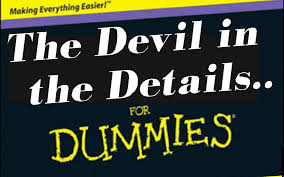I seem to be obsessed with family heritage, as I continue to identify how each of my DNA matches somehow fits on the sprawling branches of my tree. There are currently nearly 26,500 entries – granted some are duplicates. I’ve now identified over 400 DNA relatives, ranging from a half-sister to very distant cousins going back 8 generations. Each are connected in some way and finding those threads seem somehow important to me. Most of them stem from three sources: Laborn Banister (1801-1885), William Thomas Bannister (1787-1861) and William “Devil Bill” Cline (or Kline) (1781-1834). It is not exactly comforting knowing that a devil is part of your heritage.
Bill was born and buried in North Carolina. William was from Virginia before moving to South Carolina. Laborn came from Tennessee and died in Indiana. As my most direct fore-father, Laborn is the primary reason why I’m a Hoosier. When I think of life in the late 1700’s, details like crowded log cabins, no running water, and farming come immediately to mind. As a result, big families were the norm, sharing the rugged duties of the homestead. All of the “Big 3” were post-Revolutionary War babies. William Bannister’s father was a Colonel. Devil’s dad was Christopher “Stoffle” Klein, originally from Pennsylvania, while little is known about Lamar’s predecessors. Obviously, all of them once had Irish and roots, but records are confusing or non-existent in their transition to the States.
Nicknames like “Devil Bill” were important because there were sometimes more than one William in the same family. This becomes a genealogist’s nightmare. Laborn was at least distinctive. Parents were certainly not very creative in naming their offspring, so Mary, Susan, and Thomas were all too common. Multiple marriages were also the norm, considering the primitive lifestyle, lack of medical care, and consequential short life expectancy. Another wife or husband meant more children of the same name. Records were limited to a diary, if there was a family member that was educated. Bibles became the primary keepers of family stories, although they deteriorated through time, along with wooden grave markers.
DNA is the modern day genealogical tool. It’s much more accurate than the scribbles in the back of a Bible. Testing was also preceded by the tombstone that recorded family history in a more permanent manner than wooden crosses. DNA testing is unfortunately limited to modern times, with most databases extending back only about 75 years. It’s rare to find a DNA match in these voluntary archives of anyone over 80 years of age. Most of my matches are with people younger than my youthful 68 years. Needless to say, “Devil Bill” is not a DNA relative. His connection is based on a much less accurate combination of DNA from others, tombstones, diaries, Bibles, tax filings, property records, and Census Reports – now all computerized.
There is a lot of guesswork, speculation, and trust involved in defining one’s heritage. Most of the Jerry Banister Family Tree that I’ve built is based on research from others, some of which undoubtedly isn’t accurate. To make matters even more complicated, the information on anyone still alive is protected. An obituary immediately frees all that personal information, making it much easier to find your connection with them. Otherwise, I have to rely on newspaper articles, marriage records, social media, etc. to learn more about them. This, in my opinion, often verges on stalking.
With Ancestry.com, I can easily track a DNA match if we have “common ancestors” like Laborn, William, and “Devil Bill.’ Otherwise, just like “relatives” on 23andMe, it requires a lot of detective work, with the reward typically being just another stranger in my life. Sadly, none of the strangers know about me, unlike the relatives of the adopted family that I raised me. Maybe it will all come together some day, as more people subject themselves to testing and deaths provide more information? It’s entertaining but tedious, like solving a giant puzzle. I can only hope that I won’t become one of those tragic but inevitable casualties, and my work where “The Devil is in the Details” can continue.

Leave a Reply